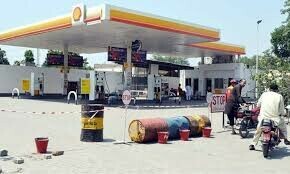• Hearing on Rs700bn electricity tariff increase on 8th • Protected consumers face 51pc rise • Real applicable average national tariff to hit Rs65-72 per unit
ISLAMABAD: The National Electric Power Regulatory Authority (Nepra) has called a public hearing on July 8 on the question of passing on more than Rs700 billion additional burden to electricity consumers during the current fiscal year by jacking up the average national tariff by around Rs5.72 per unit.
The increase would significantly impact the sale rate for poor protected consumers with a rise of over 51 per cent.
This tariff hike, effective July 1, 2024, affects all ex-Wapda distribution companies (Discos) and K-Electric. The measure is part of the International Monetary Fund’s (IMF) “prior action and structural benchmark,” and the public hearing is just a formality.
On June 14, Nepra already announced almost a 20pc (Rs5.72 per unit) increase in the uniform national tariff to ensure about Rs3.8 trillion in funds to the 10 Discos during the fiscal year 2024-25.
The government has worked out minor subsidies for certain lifeline consumers, mostly using a maximum of 100 units per month, and has spread out the remaining revenue requirements determined by Nepra to other consumer categories.
In doing so, the government has suggested raising the tariff by 51pc for “protected consumers” using up to 100 units per month and 41pc for protected consumers using up to 200 units per month. More than 15.5 million consumers fall into this category.
Among the “unprotected category”, the biggest increase of more than 43pc (or Rs7.12) to Rs23.6 per unit (kilowatt-hour, or kWh) has been suggested for the first 100 units involving another 5.95 million consumers.
This would be followed by a 31pc and 27pc increase in rates (Rs7.12 per unit each) for the 101-200 and 201-300 slabs to Rs30.1 and Rs34.25 per unit, respectively. Another five million consumers fall into these two categories.
The consumers of the next five household categories ranging from 300 units and above would face a 14pc to 22pc increase (Rs6.12 per unit each), but they would be simultaneously subjected to a new fixed capacity charge of Rs200-1,000 per kilowatt capacity.
This fixed charge would be Rs400 and gradually increase to Rs5,000 per month depending on the sanctioned load capacity. Likewise, agricultural consumers would be subjected to a fixed capacity charge of Rs400 per kilowatt, and their tariff increase would range between 19-44pc (about Rs5.75 to Rs6.59 per unit).
All other consumer categories — commercial, general services, industrial and bulk — would be subjected to Rs1,250 per kilowatt fixed capacity charge compared to the existing rate of Rs400-500 per kilowatt.
On top of this capacity charge increase, commercial and general services tariff would increase by 17pc (Rs5.89 per unit) to about Rs44.
On the other hand, the industrial tariff for the B1 category would be reduced by 6-8pc (Rs2-2.65pc) to Rs31.65 per unit, but the off-peak rate for all other industries exceeding 25-kilowatt capacity would increase by 8-11pc (Rs2.64 to Rs3.56 per unit), and the peak rates would remain unchanged.
The power division said the proposed tariff would generate Rs3.5tr to 10 Discos during the current fiscal year, about Rs580bn higher than last year.
After the impact of 18pc GST, the total revenue would reach around Rs4.2tr in addition to any further adjustments in the shape of monthly fuel charges and quarterly tariff adjustments for exchange rate, inflation and other factors.
The average national base tariff, including for K-Electric, has now been worked out at Rs35.50 per unit for the next fiscal year, against Rs29.78 per unit for the current year. This would yield about Rs3.763tr in revenue to 10 Discos this fiscal year, compared to Rs3.28tr last year.
The power regulator is expected to conclude its process within a couple of days and a formal notification is expected by July 10.
After adding the cost of losses and distribution margins, the average tariff rises to Rs35.50 per unit. An official said the real, applicable average national tariff would now be between Rs65 and Rs72 per unit after including surcharges, taxes, duties, and levies, as well as monthly and quarterly adjustments.
Published in Dawn, July 5th, 2024















































Dear visitor, the comments section is undergoing an overhaul and will return soon.